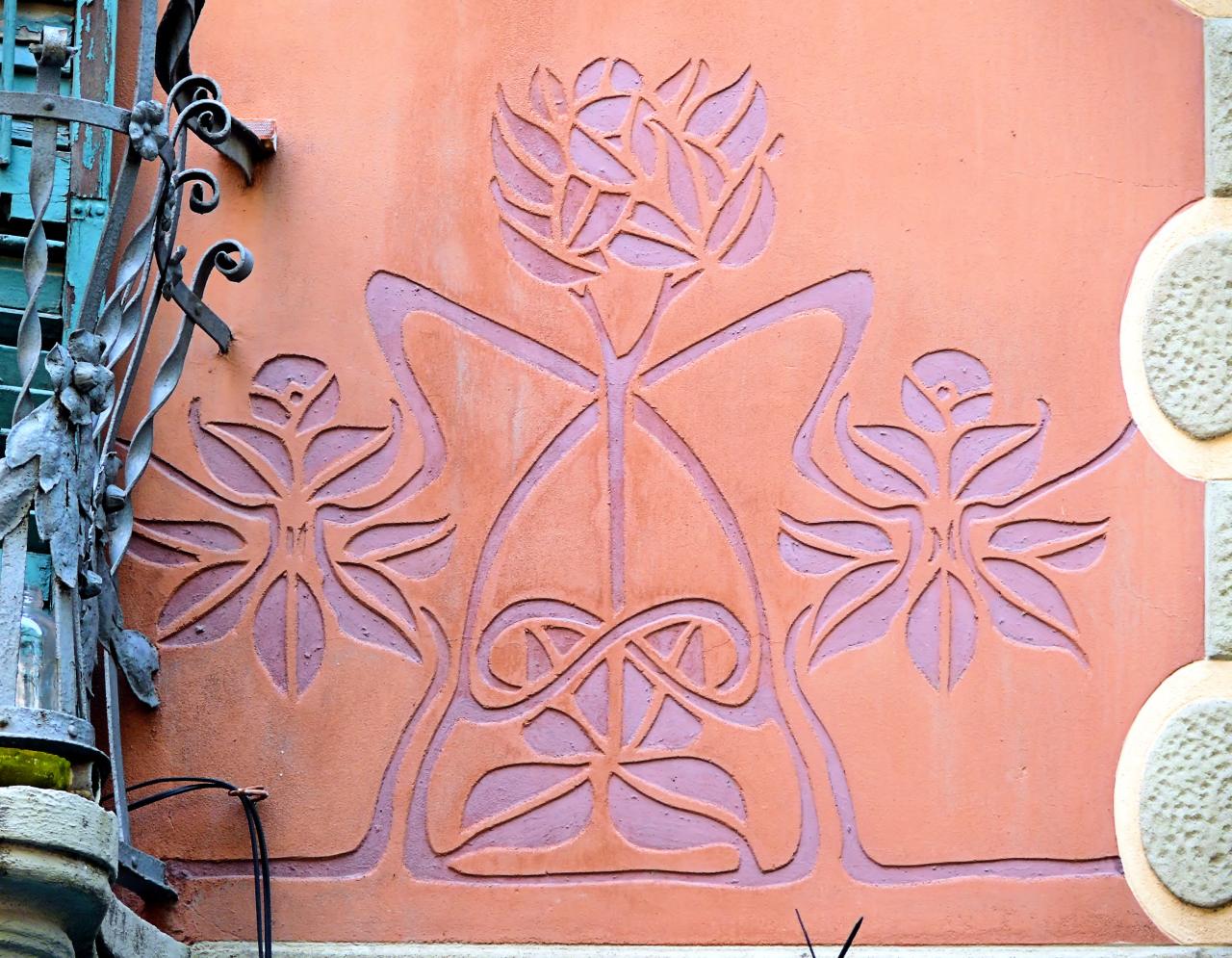#1896. Art Nouveau Floral Relief on a Terracotta Facade
Before us is a magnificent example of decorative facade design in the Art Nouveau style. On the terracotta background of the wall, there is a relief floral ornament, characteristic of early 20th century architecture. The central composition presents a stylized image of three floral motifs – a large central flower with two symmetrical side elements.
The execution technique deserves special attention: the contours of the drawing are convex, while the background is slightly recessed, creating a soft play of light and shadow. The pastel lilac shade of the ornament's background delicately contrasts with the main terracotta color of the wall. Such a color solution is typical for Art Nouveau with its love for muted natural tones.
On the left side of the photograph, a fragment of wrought iron grille with flowing curves and floral motifs characteristic of Art Nouveau can be seen, complementing the overall stylistics of the facade. On the right, a fragment of another decorative element is visible, possibly a stucco decoration in the form of a medallion.
This decorative facade element demonstrates the typical Art Nouveau aesthetics, where flowing lines, floral motifs, and the pursuit of beauty in every detail prevail. Such ornamental solutions are commonly found in urban architecture across Europe and Russia from the late 19th to early 20th centuries.
